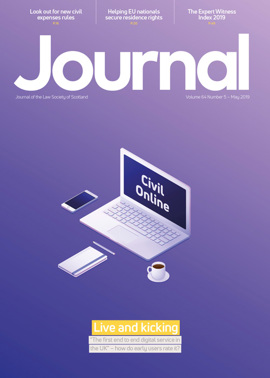Brexit focus: EU citizen settlement remedies

Leaders may be aware of the UK’s ongoing attempts to leave the European Union. On 11 October 2018 (presumably in recognition of the catastrophic economic impact of Brexit, and in keeping with the political declaration contained within the Draft Withdrawal Agreement to secure the rights of EU nationals living and working in the UK), the Secretary of State for the Home Department tabled changes to the Immigration Rules. HC1534 came into force on 1 November 2018, introducing Appendix EU to the increasingly Byzantine schedule of Immigration Appendices, and making statutory provision for the operation of the EU Settlement Scheme.
Appendix EU is designed to transpose the citizens’ rights provisions of the Draft Withdrawal Agreement into UK law. The Appendix does not require EU nationals to have exercised their Treaty rights under the Citizens’ Directive 2004/38 in order to be eligible for leave to remain under Appendix EU. Instead, a far more generous approach has been taken which merely requires an applicant to establish residence in the UK during the qualifying period. In short, EU citizens will not require to provide evidence that they have been exercising free movement rights for an application to succeed, simply that they have been residing in the UK. The application process is broken into three distinct stages, and is designed to be completed entirely online.
Establishing EU citizen identity
As with so many digital transactions, the application begins with an app, currently only available on devices running Android. Apple users are awaiting Apple Inc security approval to use Apple’s Near Field Communication, which appears to have been agreed in principle, and is scheduled for release to Apple devices by the end of 2019.
The application essentially captures images of the document used to identify the applicant, and both EU passports and EU national ID cards satisfy the ID requirements in the appendix if they are valid. If the document has biometric information stored in a chip, NFC on the device scans the data and checks this against the captured images. If the applicant does not have ID documents that contain biometric data chips (fewer and further between these days), the document will require to be sent to the Home Office for manual verification.
The ID section is concluded with the app capturing digital images of the applicant’s face (it makes you take a selfie), and then 3D biometric images of the applicant, all using the device’s stock digital camera technology. Once the ID section is complete, an electronic Home Office application is created with a link sent to the applicant’s email address. The remainder of the application is completed through the online portal.
Residence requirement
To satisfy the residence requirements in the Appendix, the applicant provides their national insurance number (if they have one – it is anticipated that the vast majority of EU nationals will, given they are mostly exercising EU Treaty rights as workers in the UK). The system then dispatches “bots” that search both HMRC and DWP systems to attempt to ascertain the applicant’s likely residence from their economic activity. If the data procured demonstrate adequate residence equal to or in excess of five years, EU settled status will be granted (section 11, Appendix EU). This bestows permanent residence in the UK, and is almost identical to a grant of indefinite leave to remain for non-EEA nationals made within the other myriad provisions of the Immigration Rules. The applicant is no longer subject to immigration control.
If residence cannot be ascertained automatically with the foregoing process, the applicant requires to forward documentary evidence that proves residence for the period, for example bank statements, council tax bills etc. In the event that insufficient evidence can be produced to demonstrate residence throughout the five-year period, “pre-settled status” will be granted (section 14, Appendix EU).
This will effectively be a grant of limited leave to remain for a period of five years, with the applicant becoming eligible for settled status once the five-year period is complete. The applicant remains subject to immigration control but is allowed to exercise all activities previously enjoyed under EU Treaty rights (assuming these Treaty rights have been lost at the date of UK exit).
Suitability
The third and final stage is essentially a good character assessment. An application may be refused on suitability grounds in two explicit scenarios, as per section 15, Appendix EU:
“(a) In relation to the application and whether or not to the applicant’s knowledge, false or misleading information, representations or documents have been submitted (including false or misleading information submitted to any person to obtain a document used in support of the application); and the information, representation or documentation is material to the decision whether or not to grant the applicant indefinite leave to enter or remain or limited leave to enter or remain under this Appendix; or
“(b) The applicant is subject to a removal decision under the EEA Regulations on the grounds of their non-exercise or misuse of rights under Directive 2004/38/EC”.
The other important criterion for an application being refused as “invalid” will be the occurrence of a “supervening event”. These are detailed at sections 23 and 32 of the Immigration (European Economic Area) Regulations 2016 (as amended). Immigration practitioners will be all too familiar with these provisions, as they contain the primary tests for consideration and grounds for deportation or administrative removal of an EEA national if this decision is justified by the applicant’s “continued presence not being justified on grounds of public policy, public security or public health”.
These suitability criteria have the potential to cause applicants substantial immigration issues, and could provoke immigration enforcement action, including detention, deportation or other enforced removal from the UK. At this stage of the application, the system runs a search on the Police National Computer database, which contains a record of the applicant’s criminal history, including potential offences committed in other EU jurisdictions. It should be made clear to applicants the importance of full disclosure of any historic criminal offences. Failure to disclose may result in the decision maker inferring attempted deception on the part of the applicant, and the decision requiring to be challenged at the FTT, leading evidence from the applicant as to understanding and intention when the disclosure was omitted.
Duration and deadlines
At the time of writing, the date when the UK will leave the EU by operation of law is 31 October 2019. If the UK leaves with a deal, the deadline for applying for either pre-settled or settled status is 30 June 2021. If the UK leaves without a deal, the deadline for applying will be 31 December 2020, and will only be open to applicants who were resident in the UK on exit day. These dates were set when exit day was 31 March 2019, and do not appear to have been amended despite the extension of EU membership over the summer. There is no fee for making the application, and any fees charged during the pilot phase prior to 30 March 2019 should be refunded. EU citizens with settled status can be joined by close family members, presumably now until 31 October 2022, provided the relationship existed on UK exit date.
First-tier Tribunal (IAC) – no deal, no appeal
The Immigration and Social Security Co-ordination (EU Withdrawal) Bill is the primary piece of legislation that will extinguish EU free movement rights. The bill as it currently stands before Parliament includes no tribunal appeal right for those making applications under the EU Settlement Scheme, although several amendments have been tabled at committee stage, unsuccessfully thus far. Yet a commitment to this appears to be in the Withdrawal Agreement.
The bill therefore creates a “no deal, no appeal” situation. If there is a withdrawal agreement, and an associated Withdrawal Agreement (Implementation) Bill inclusive of an appeal right, applicants under the EU Settlement Scheme will have FTT appeal rights. However if there is not a deal, inclusive of an appeal right, applicants under the Settled Status Scheme will only have access to internal Home Office administrative review, or petitioning for judicial review.
Citizens Advice Scotland – EU citizens support
This service is for EU citizens who would like to apply for Settled Status but have complex support needs – limited digital access, those at greater risk due to personal circumstances, language barriers, or specific immigration or residency issues, for example.
The Scottish Government, via Citizens Advice Scotland, has allocated funding to cover the two year transition period for the Settlement Scheme. Specialist dedicated advisers can provide OISC level 1 advice to members of the public via a free national helpline, and all 59 citizens advice bureaux in Scotland are capable of providing guidance and support to assist with the application process.
Lanarkshire Community Law
Centre, working in partnership with Airdrie CAB, has been awarded funding to provide second-tier solicitor support to CAB staff across Scotland, and a referral service for legal representation at the First-tier Tribunal (IAC), or when deportation enforcement procedures are provoked by the refusal of an application. The law centre is funded by the Scottish Legal Aid Board and Citizens Advice Scotland, a unique and innovative community partnership with Airdrie CAB, assisting vulnerable sections of the community with housing, homelessness, immigration, and general social welfare litigation.
In this issue
- Claiming under the advance payment scheme
- Time for a written constitution
- New form F9: worth the wait?
- Wedded to a matrimonial property regime
- Brexit divorce set to increase UK's “skype families”
- Corporate personality: Justice v Doctrine
- Reading for pleasure
- The Law Society of Scotland Expert Witness Index 2019
- Opinion: Judith Robertson
- Book reviews
- Profile: Michael Clancy
- President's column
- Is your legal data being held to ransom?
- People on the move
- Sign up – log in – action!
- Frozen out?
- Taxing times for litigators
- DNA analysis: when research just isn’t enough
- Brexit focus: EU citizen settlement remedies
- Why employers should report on wellbeing
- 3% – and then what?
- 1,000 days of mediation
- Barred from acting
- To name or not to name?
- Enter the “What I Think”
- Fixed penalties and fair trials
- Auto-enrolment: keeping employers on their toes
- Scottish Solicitors' Discipline Tribunal
- Vulnerable accused: a need for knowledge
- Burdens and who can enforce them
- Convener’s final bow
- Public policy highlights
- TCSP review update
- Westminster: answering the call
- Accredited paralegal practice area highlight: family law
- Accredited Paralegal Committee profile
- Nyona named star paralegal
- Ask Ash
- Moving nightmares part 2
- Complaints: seeking consistent practice
- Morally bankrupt?
- For the elderly: how SFE works
- Standing up to challenge






